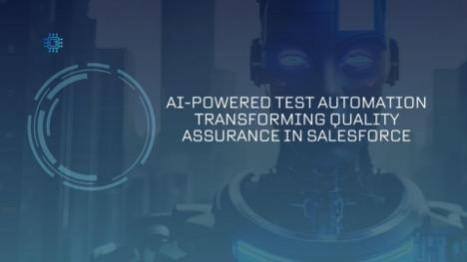
The modern digital era demands seamless enterprise software functionality, yet frequent updates and customizations in platforms like Salesforce challenge traditional testing. Srikanth Perla's research highlights AI-driven test automation as a game-changer, enhancing efficiency and reliability. By leveraging AI, organizations can tackle evolving complexities, ensuring robust quality assurance in an ever-adapting technological landscape.
Addressing Challenges with AI
Salesforce's rapidly evolving ecosystem presents significant challenges for traditional test automation, with organizations dedicating nearly half of their quality assurance resources to test maintenance. Frequent platform updates often cause script failures and increase maintenance overhead. AI-driven solutions have revolutionized this process, cutting test maintenance time by 52% and reducing false-positive test failures by 68%. A key breakthrough is machine learning algorithms that adapt to dynamic element locations, improving stability and reducing locator-related test failures by 91%, ultimately enhancing test execution reliability and efficiency.
Enhancing Accuracy with Predictive Analytics
Predictive analytics is revolutionizing test automation, enabling organizations to proactively address software quality issues. AI models analyzing historical test data can predict and prevent up to 85% of potential test failures before they impact production, with a 92% accuracy rate in identifying failure points. Additionally, intelligent error detection systems enhance defect resolution by reducing the mean time to resolution (MTTR) by 82% through automated root cause analysis. These advancements minimize manual intervention, allowing teams to focus on strategic improvements rather than routine maintenance, ultimately enhancing software reliability and efficiency.
The Role of AI in Test Automation Efficiency
AI integration in Salesforce test automation extends beyond predictive analytics, significantly enhancing testing efficiency. Advanced visual recognition technologies accurately detect UI inconsistencies across various device configurations, leveraging computer vision techniques to achieve a 97% success rate in visual element recognition. This reduces manual verification efforts by 76%, streamlining the testing process. Additionally, natural language processing (NLP) is transforming automation by converting business requirements into executable test cases with 93.5% accuracy. This innovation reduces test script creation time by nearly 60%, accelerating development cycles and improving overall test script maintainability and efficiency.
Self-Healing Test Scripts: The Future of Automation
A major advancement in AI-driven testing is the rise of self-healing test scripts, which automatically adjust to UI changes, cutting maintenance efforts by over 80%. Organizations using this technology see fewer test failures and greater reliability, reducing manual intervention and strengthening automation frameworks. Additionally, automated test generation is rapidly evolving, with AI-powered systems creating test cases covering 95% of functional requirements. This reduces test creation time by 79%, allowing teams to focus on complex scenarios and improving overall test coverage and efficiency.
Overcoming Implementation Challenges
While AI-powered testing frameworks offer significant advantages, their implementation presents challenges. High-quality training data is crucial, as AI models require extensive datasets for accuracy. Integration complexities can delay deployment, making strategic planning essential. Best practices emphasize a structured approach, with gradual AI adoption based on key performance metrics for smoother transitions. Regular model retraining is vital to maintaining accuracy and adapting to evolving platform changes, ensuring long-term efficiency and reliability in AI-driven test automation.
A Glimpse into the Future
The future of AI-driven test automation points toward fully autonomous quality assurance systems. As AI capabilities continue to advance, organizations can expect even more intelligent test optimization, automated test suite management, and improved defect detection accuracy. By leveraging these innovations, enterprises can ensure robust software performance while reducing maintenance overhead and accelerating development cycles.
In conclusion, Srikanth Perla's research highlights the transformative impact of AI-powered test automation in Salesforce. As businesses adapt to digital transformation, adopting AI-driven solutions is crucial for achieving scalable, efficient, and resilient quality assurance, ensuring seamless platform functionality while reducing maintenance overhead and enhancing overall testing reliability.








![Sky is the limit: IndiGo is now tenth largest airline by capacity globally; growth indisputable [details]](https://data1.ibtimes.co.in/en/full/767455/sky-limit-indigo-now-tenth-largest-airline-by-capacity-globally-growth-indisputable-details.jpg?w=220&h=138)








